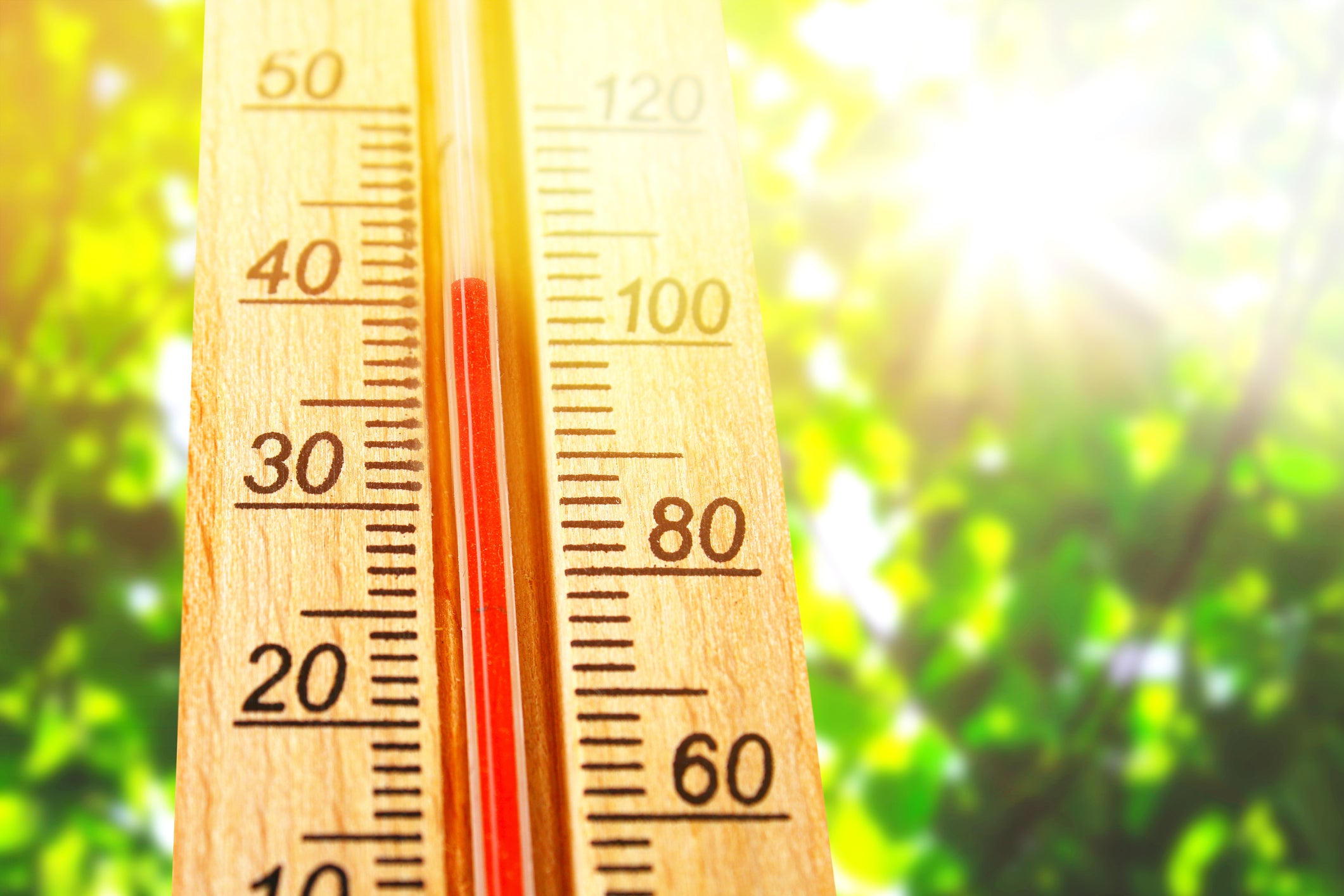Summer has finally arrived, but unless our plants are in containers and can be brought indoors, they must endure the heat. Most summers can be warm, but abnormally high temperatures can stress plants, resulting in sunburn, wilting, and even death. Plants in containers are more vulnerable to extreme heat and weather because the air temperatures can “fry” the roots and tops of plants. Shallow-rooted plants such as annuals, especially those in your hanging baskets, can be affected the most from a heat wave. Succulents can tolerate the heat well.
Thankfully, there are methods that can be used to moderate damaging effects of summer heat.
Here are our five ways to help your plants survive the summer heat and how to determine if you can revive a ‘fried’ plant.

1. Give your plants extra water
High temperatures will require more watering because there is an increase in the rate the water lost from the plant’s leaves. This results in sunburn damage and wilting. Increase the amount of supplemental irrigation to your plants. The best time to do this is the day before a heat wave arrives.
The time of day you water your plants is very important to keep in mind. Watering in the middle of the day will not be as effective because your shrubs, perennials, and plants are devoting their energy to surviving the heat, not taking in water. The best time to water plants is in the morning when temperatures are lower. Do not over-water because this can also harm your plants, even in a heatwave.
2. Skip fertilizingPlants use all their resources to survive heat and cannot spare the energy needed to take in fertilizer. Instead, the fertilizer remains in the soil and can burn the plant. When the hot weather is over, return to your regular fertilizing schedule.
3. Avoid pruningSunburned growth on your plants can be tempting to prune away but put away your pruners! This sunburned foliage is protecting the interior of your plant by providing shade and coverage from the sun. Wait to prune the sun-damaged growth until the temperatures return to normal in case there is another heatwave.
4. Provide temporary shadeOn a hot day, we escape the heat by moving to shade or indoors. Unfortunately, plants cannot move toward or into the shade, but we can bring the shade to them. Shade cloth and landscape burlap can be placed on top of the plants to protect them from the sun. If you have container plants, it is beneficial to have them on rollers so that you can move them around as needed to put them into shady areas.
5. Mulch, mulch, mulchRoots can also be affected by hot temperatures. Adding a layer of mulch around ground covers, shrubs, and trees will keep the soil a couple of degrees cooler while stopping it from drying out. Apply your mulch about three inches thick around the plants, spreading it near the drip line or water source. Ensure to keep it about six inches away from tree trunks.
The effects of a heat wave can leave your plants ‘fried’, so how can you tell if it is dead or alive?
Wilting

Each plant has its own “permanent wilting point” that determines if it can recover or not. If it goes past this point, there is no amount of water or care that can bring it back. If your plant’s leaves begin to plump up after you have watered it deeply, then the plant should be fine.
Sunburned leaves
When this happens, check to see if the stems are pliable or green; if they are, your plant is still alive. If there is any green present on the leaves, this also means your plant is salvageable. Like we mentioned above, avoid removing the sunburned leaves until the heat wave is over because they protect the healthy parts of your plant.
Replacing plants
One of the hardest decisions we can make as gardeners is whether to keep a plant or annual that is on the decline. The best thing you can do, after you have determined the plant won’t survive, is to remove the plant and take it as an opportunity to give your garden a refresh. It saves you from having to constantly worry about the plant and whether it has survived the heat.
Keep on eye on the weather and take precautionary actions to protect your precious plants.
Thanks so much .. you probably saved a lot of my plants .. I’ve been doing a lot of what you said already but was gearing up to fertilize everything because I thought it would help in this heat .. glad I read your article …
Good thing I did not prune drooping lilac before I read what my sweet grand daughter sent me Thanks. Btw the lilac is heat tolerant. Tolerant to a limit!
Thanks for the information, found it really helpful!
Thanks for a really informative article. We needed this info last June when we and the plants were fried. It was nice to have some good info before the heat arrived this year. I’ve share your article with our neighborhood in Keizer. So appreciate you getting this out to us ahead of upcoming heat!
Leave a comment